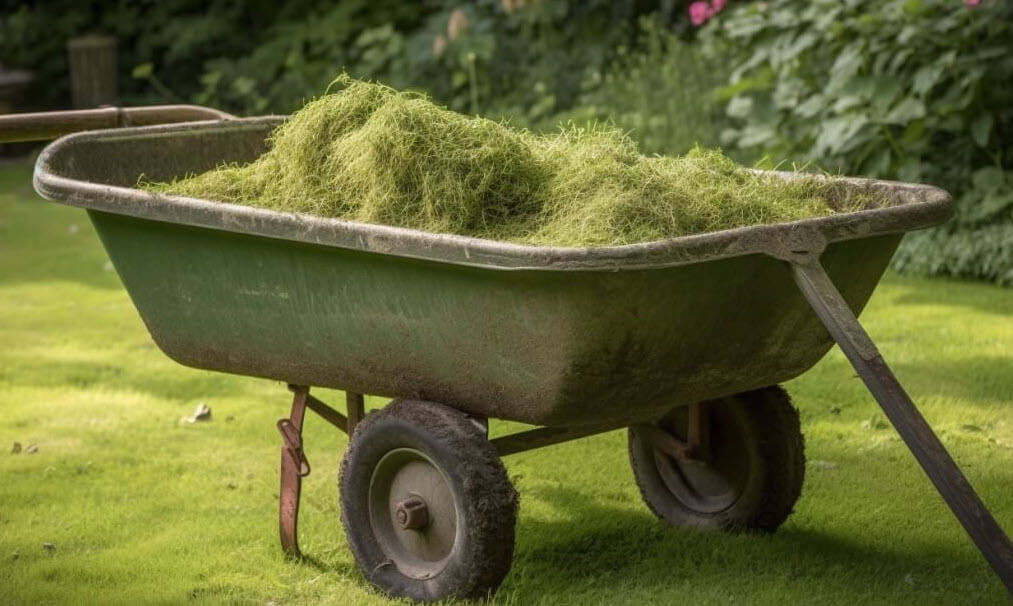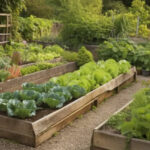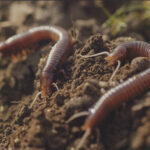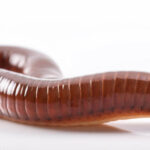Table of Contents
Are you tired of tossing your grass clippings into the trash? Did you know that those clippings can actually be used to benefit your garden? By using grass clippings as compost, you can improve the health of your soil and grow healthier plants. In this article, we will explore the benefits of using grass clippings in your garden and how to properly compost them.
The Benefits of Using Grass Clippings
Using grass clippings as compost is not only a great way to reduce waste but also has many benefits for your garden. Here are some of the benefits:
1. Nutrient-rich compost
Grass clippings are a great source of nitrogen, which is essential for plant growth. When you use grass clippings as compost, you are providing your soil with a nutrient-rich source of nitrogen that your plants will love.
2. Improved soil structure
The organic matter in grass clippings helps to improve soil structure, making it easier for roots to grow and allowing water to penetrate more easily. This can help to prevent soil erosion and improve overall soil health.
3. Cost-effective
Using grass clippings as compost is a cost-effective way to nourish your garden. You can save money on fertilizer and other soil amendments by using what you already have on hand.
4. Reduce landfill waste
By composting grass clippings, you are reducing the amount of waste that goes into landfills. When organic matter breaks down in a landfill, it produces methane, a potent greenhouse gas. By composting at home, you are reducing your carbon footprint and helping the environment.

How to Compost Clippings
Now that you know the benefits of using grass clippings in your garden, let’s take a look at how to properly compost them.
1. Use fresh clippings
Fresh grass clippings are best for composting because they are high in nitrogen and break down quickly. However, if you have a large amount of clippings, it is best to let them dry out for a few hours before composting to prevent them from matting and becoming slimy.
2. Mix with other organic matter
To create a balanced compost, it’s important to mix your grass clippings with other organic matter such as leaves, kitchen scraps, and shredded paper. This will help to provide a variety of nutrients and prevent the clippings from clumping together.
3. Keep it moist
Compost needs to stay moist to break down properly. If your grass clippings are dry, you can add water to the pile to keep it moist. However, be careful not to add too much water, as this can cause the pile to become waterlogged.
4. Turn the pile
To speed up the composting process, it’s important to turn your pile regularly. This helps to aerate the compost and distribute nutrients evenly. You can use a pitchfork or compost turner to do this.
5. Use the finished compost
Once your compost has broken down into a dark, crumbly substance, it’s ready to use in your garden. You can spread it around your plants to nourish the soil and help your plants grow.
Examples of Plants Benefitting from an Application
Grass clippings are a great source of nitrogen and can benefit a variety of plants in your garden. Here are some examples of plants that can benefit from the use of grass clippings as compost:
1. Leafy greens
Plants such as lettuce, spinach, and kale benefit from nitrogen-rich soil. Using grass clippings as compost can help to provide the necessary nutrients to grow healthy and tasty greens.
2. Tomatoes
Tomatoes are heavy feeders and require a lot of nutrients to produce a good crop. Grass cuttings can provide the necessary nitrogen and other nutrients to help your tomatoes thrive.
3. Corn
Corn is another heavy feeder that requires a lot of nutrients to grow properly. The clippings can help to provide the necessary nitrogen and other nutrients to help your corn grow tall and healthy.
4. Peppers
Peppers also benefit from a nitrogen-rich soil. Using grass clippings as compost can help to provide the necessary nutrients to grow healthy and flavorful peppers.
5. Beans
Beans are legumes that are able to fix nitrogen from the air, but they still require a healthy soil to grow properly. Using grass clippings as compost can help to provide the necessary nutrients to grow healthy and productive bean plants.
By using grass clippings as compost, you can help a variety of plants in your garden to grow healthy and strong. So next time you mow your lawn, think twice before throwing away those clippings!

Tips for Application
Now that you know the benefits of using grass clippings as compost and which plants can benefit from it, here are some tips for applying grass clippings to your garden:
1. Use in moderation
While the clippings are a great source of nutrients, it’s important to use them in moderation. Too much grass clippings can lead to a pile that is too hot and can burn your plants. A good rule of thumb is to use no more than 1 inch of clippings at a time.
2. Spread evenly
When applying the clippings to your garden, it’s important to spread them evenly. This will help to prevent clumping and ensure that all areas of your garden receive the necessary nutrients.
3. Mix with other organic matter
To create a balanced compost, it’s important to mix your grass clippings with other organic matter such as leaves, kitchen scraps, and shredded paper. This will help to provide a variety of nutrients and prevent the clippings from clumping together.
4. Don’t use treated grass
If you have treated your lawn with chemicals such as herbicides or pesticides, it’s important to avoid using those clippings in your compost pile. These chemicals can harm your plants and contaminate your soil.
5. Compost before using
While fresh clippings can be used as mulch around your plants, it’s best to compost them before using them in your garden. This will help to break down the clippings and ensure that they are safe for your plants.
6. Spread thinly
While grass clippings are a great source of nutrients, it’s important to spread them thinly. Too much clippings can lead to a pile that is too hot and can burn your plants. A good rule of thumb is to use no more than ½ inch of clippings at a time and spread them evenly over your garden beds. This will help to prevent clumping and ensure that all areas of your garden receive the necessary nutrients.
7. Spread evenly to avoid clumping
When applying grass clippings to your garden, it’s important to spread them evenly to avoid clumping. Clumps of clippings can create hot spots in your compost pile which can lead to an imbalance in the decomposition process. This can result in a pile that is too hot and can burn your plants. Evenly spreading the grass clippings will help to prevent clumping and ensure that all areas of your garden receive the necessary nutrients.
By following these tips, you can ensure that you are using grass clippings in a safe and effective way to benefit your garden.
Conclusion
Using grass clippings as compost is a simple and effective way to improve the health of your garden while reducing waste. By following these tips, you can create a nutrient-rich compost that will help your plants thrive. So next time you mow your lawn, don’t toss those clippings in the trash – turn them into compost instead!
If you like organic methods of gardening, check out the Soil Association website
Here is an excellent video from Huw that explains how to use grass clippings in your garden:
If you need any further information or assistance with this article, don’t hesitate to Contact Us




















